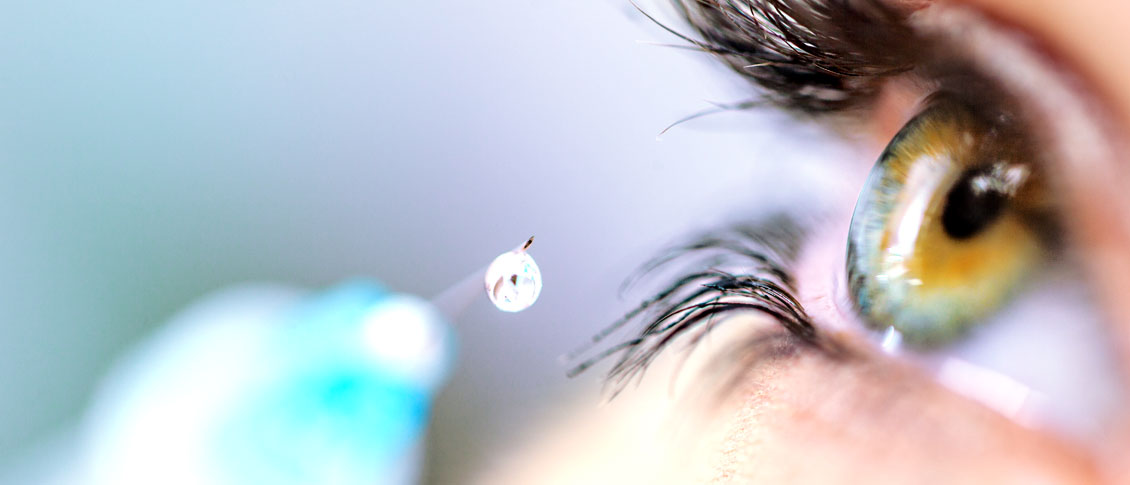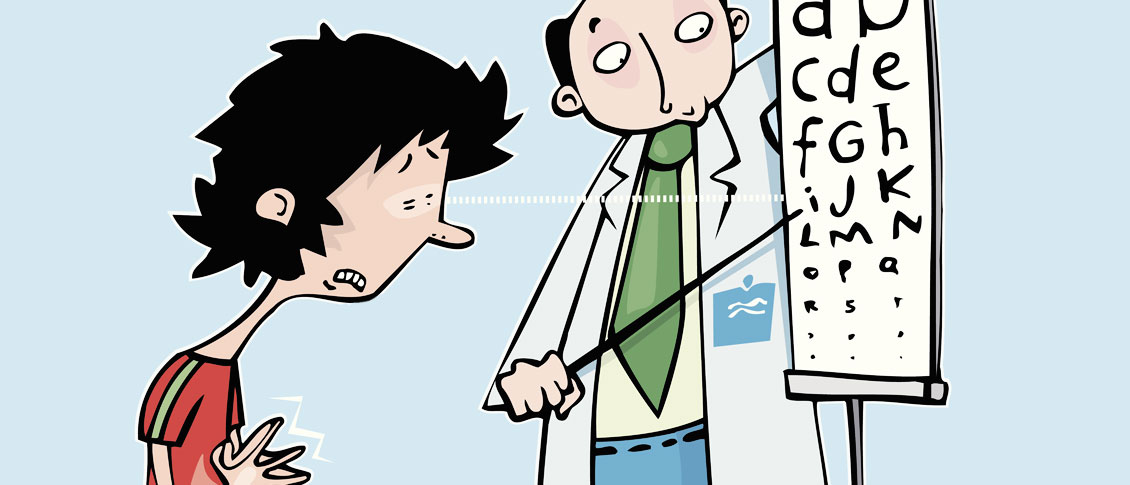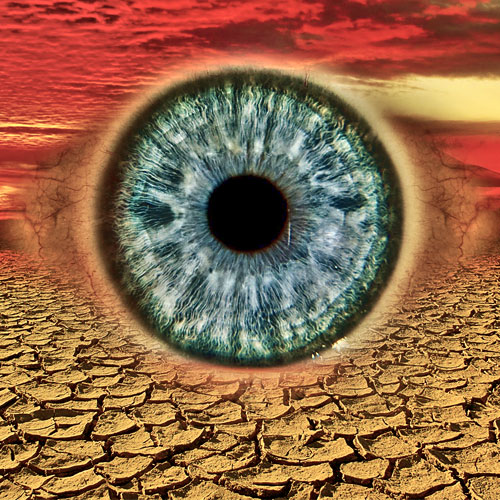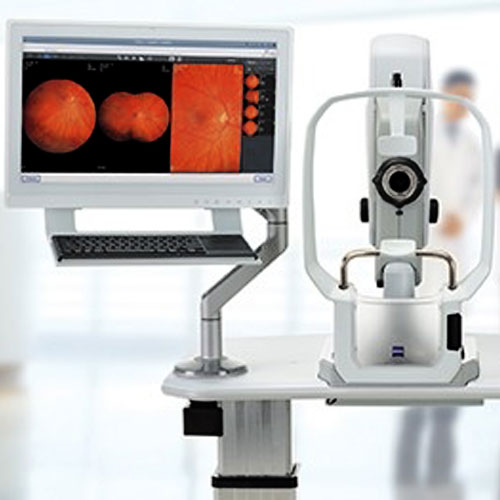Looking for Something?
Location & Hours
719 W Main St
Atlanta, TX 75551
| M, W, Th, F: | 8:00am - 5:00pm |
| Tuesday: | 8:00am - 6:00pm |
Related Articles
- 10 Eye Jokes Just for You!
- 10 Eye Related Jokes to Brighten Your Day
- 10 Eye-Opening Eye Facts
- 10 Eye-Popping Eye Jokes
- 10 Fascinating Facts about the Eye
- 10 Fun and Fascinating Eye Facts
- 10 Super Cornea Optical Jokes Just for You!
- 10% of Glaucoma Cases are Closed or Narrow Angle
- 11 Bad Contact Lens Habits
- 11 Fun and Fascinating Eye Facts
- 12 Terrible Eye Jokes
- 13 MORE Eye Jokes Just for You!
- 13 More Eye Related Jokes to Brighten Your Day
- 13 MORE Eye-Popping Eye Jokes
- 13 More Super Cornea Optical Jokes Just for You!
- 20-20-20 Rule for Better Vision
- 2019 Most Dangerous Toys for Kids
- 2020 Most Dangerous Toys
- 3 Blinding Diseases We We Can Check for During Your Exam
- 4 Good Reasons for Older Adults to Have Regular Eye Exams
- 4 Reasons Your Eyelid Might Be Twitching
- 5 reasons not to buy your eyeglasses online
- 5 Reasons to Avoid Internet Eyeglasses
- 5 Reasons to Buy Glasses Locally
- 5 Reasons to Buy Your Glasses Locally
- 5 Ways to Take Care of Your Optical Assets
- 6 Activities That Can Change Your Eye Pressure
- 6 Reasons Sunglasses Are Essential
- 6 Reasons Sunglasses Are Essential
- 6 Reasons to Wear Great Sunglasses
- 7 Tips For Getting The Most Out Of Your Eye Exam.
- 7 Tips for Your Best Eye Exam
- 7 Tips for Your Next Eye Exam
- 7 Tips from an Eye Doctor on Getting the Most from Your Exam
- 9 Fascinating Facts About Green Eyes
- 9 Intriguing Facts About Green Eyes
- 90% of Glaucoma Cases are Open Angle
- A Child's Vision
- Activities That Can Change Your Eye Pressure
- ADHD and Your Eyes
- Aging and the Eye
- Alcon DAILIES TOTAL1
- Allergies are one of the most common eye conditions
- Am I Dealing with Allergies, Dry Eye, or Infection?
- An Eye on Fireworks Safety
- Annual Eye Exams-Good for Your Health and Your Wallet
- Another Perspective on Texting & Driving
- Anti-Reflective Lenses
- Are My Cosmetics Making My Dry Eye Worse
- Are My Eyes Changing Colors?
- Are My Meds Making My Eyes Drier?
- Are My Reading Glasses Making My Eye Worse?
- Are Reading Glasses Making My Eyes Worse?
- Are You Asking for Trouble with Your Contacts Care Routine?
- Astigmatism
- Astigmatism is NOT a Scary Diagnosis
- Back-to-School Eye Exams
- Bargain Halloween Contacts?
- Basics of Macular Degeneration
- Best Place to Turn for Help for a Red Eye
- Bilberry & Macular Degeneration
- Blepharitis
- Blepharitis 101
- Blepharitis, a Common Eye Condition
- Bring Your Glasses to the Eye Doc...Even if You HATE Them!
- Can Drug For Rheumatoid Arthritis Damage Eyes?
- Can I Have Cataract Surgery if I Have Macular Degeneration?
- Can you guess the most dangerous sports for eye injuries?
- Can't Learn to Live with Those Eye Floaters?
- CareCredit - Benefits Are All Around
- Carrera 85 Icons
- Cataract Surgery
- Cataract Surgery and Anesthesia
- Cataract Surgery and Anesthesia Types
- Cataract Surgery and Life Expectancy
- Cataract Surgery? I see fine!
- Cataracts
- Catch These Vision Conditions Early
- Chances Are Good You Have These Mites in Your Eyelids
- Charles Bonnet Syndrome and Visual Hallucinations
- Choosing The Right Eyeglass Frames For Your Face
- Computer Vision Glasses
- Computer Vision Syndrome
- Contact Lens Care 101
- Contact Lens Hygiene 101
- Corneal Molding or Ortho-K
- Corny Eye Jokes for Your Holiday Get-Togethers
- Coronavirus and Your Eyes
- Costume Contacts Can Make Halloween a Scary Time
- Dealing with Macular Degeneration
- Dealing with Macular Degeneration
- Demodex--the Mite that Lives Among Your Eyelashes
- Demodex: The Weird Little Mite Living in Your Eyelashes
- Detecting Alzheimer's Disease through the Eyes?
- Detecting Alzheimer's though an Eye Exam?
- Diabetic Retinopathy
- Diabetic Retinopathy ABC's
- Diabetic Retinopathy Basics
- Diabetic Retinopathy Diagnosis and Treatment
- Diabetic Retinopathy Explained
- Diabetic Retinopathy Must-Knows for Everyone with Diabetes
- Diabetic Retinopathy--Diagnosis & Treatment
- Diagnosis and Treatment of Diabetic Retinopathy
- Did You Know - Age-Related Macular Degeneration
- Did You Know You Can Get Freckles in Your Eye?
- Differing Functions of Ophthalmologists, Optometrists, and Opticians
- Dilation Exam
- Do Erectile Dysfunction (ED) Drugs Really Cause Vision Loss?
- Do I Even Need an Exam?
- Do I Have Eye Allergies? If So, What Can I Do?
- Do I Have the Dreaded Pink Eye?
- Do I Really Need Cataract Surgery?
- Do You Know About MIGS?
- Does Your Child Have Undetected Vision Issues?
- Don't Let Your Child's Vision Issue Go Undetected
- Don't Play Trick or Treat with Your Eyes
- Dropless Cataract Surgery
- Dropless Cataract Surgery Is Now Available
- Drug Allergy or Side Effect? Knowing the difference could save your life
- Dry Eye Risk Factors
- Dry Eye Syndrome
- Dry Eyes or Allergies? Or Something Else?
- Dry Eyes Or Allergies? Which Do I Have?
- Dry Eyes Or Allergies? Which Do I Have?
- Eat Your Way to Better Eye Health
- Eating Your Way to Better Eye Health
- Emergency Room Not Usually Best Choice for Red Eye
- Every Pink Eye Is NOT 'Pink Eye'
- Explosion in Fireworks Eye Injuries
- Eye Allergies and You
- Eye Anatomy Crossword Puzzle
- Eye Color and You
- Eye Jokes--Our Gift to You!
- Eye Jokes--Our Holiday Gift to You!
- Eye Liner, Shadow, and Your Dry Eyes
- Eye Problems Associated with Lyme Disease
- Eye Safety During the Holidays
- Eye Safety for the Solar Eclipse
- Eye Safety for the Upcoming Solar Eclipse
- Eye Safety on the 4th of July
- Eye Safety: The Worst Toys for Kids
- Eyes feel Like the Sahara Desert : What do I do?
- Familiar with the 20-20-20 Rule?
- Flashes and Floaters
- Floater Relief with Lasers
- Frame Your Face
- Geriatric Eyes
- Geriatric Vision
- Giving the Gift of Sight
- Giving the Precious Gift of Sight
- Giving Your New Glasses a Chance
- Glasses=Need, Contacts=Luxury.
- Glaucoma
- Glaucoma - Open Angle and Normal Tension
- Glaucoma & Sleep Apnea
- Glaucoma Narrow Angle
- Glaucoma: Occupational Hazard for Musicians?
- Had LASIK? Get a Copy of Your Eye Records ASAP!
- Halloween Hazards
- Handling your contact lenses
- Happy 2020!
- Have You Heard About MIGS?
- Having Vision Issues After a Concussion or TBI?
- Health or Vision Insurance?
- Health vs Vision Insurance
- Healthy Life, Healthy Eyes
- Hearing That Your Driving Days Are Over
- Help for Those with Low Vision
- Help Your Child See Their Way to a Better School Year
- Help! Is My Eye Bleeding?
- Help! Growing Older and Can No Longer Read with My Contacts!
- Help! I started seeing these floating things!
- Hereditary Eye Diseases
- Holiday Eye Safety
- Holiday Eye Safety Tips
- How Eye Pressure Is Measured
- How Many of These Bad Contact Lens Habits Are You Guilty Of?
- How Parkinson’s Disease Affects the Eye
- How Shingles Can Affect Your Eye
- How to Deal with Your Scary Red Eye
- How to Give the Gift of Sight
- How to insert contact lenses
- How to Make Your Red Eyes Redder
- How to Make Your Red Eyes Worse
- How to remove contact lenses
- How to Ruin a Fun Day in the Water in One Easy Step
- How We Test Your Eye Pressure
- Hyperopia Myopia
- I Have Macular Degeneration - Should I Take Bilberry?
- I Should Pay Out-of-Pocket for Cataract Surgery Now?
- I Think My Reading Glasses Made My Eyes Worse!
- I'm 45 and My Contacts No Longer Work for Me!
- I'm seeing jagged lines in my vision! Help!
- If You've Had LASIK, Get Your Eye Records NOW!
- In a Flash...Your Eyes & Fireworks Injuries
- Intraocular lens (IOL)
- Intraoperative Aberrometry & Cataract Lens Replacement Selection
- Is an Eye Exam on Your Back-to-School Checklist?
- Is Coffee Bad for My Eyes?
- Is Coffee Good or Bad for My Eyes?
- Is It a Drug Allergy or a Side Effect?
- Is My Coffee Addiction Bad for My Eyes?
- Is My Eye Bleeding?
- Is My Eye Makeup Making My Dry Eyes Worse?
- Is There Anything I Can do to Stop Getting More Nearsighted?
- Just Found Out I Have Primary Open Angle Glaucoma. What Now?
- Keeping Your Glasses in Working Order
- Keratoconus
- Know the 3 F's of Retinal Detachments
- Laser Treatments Might Help Floaters
- LASIK
- Love Is in the Air, Love Is in the Eyes
- Love Is in the Air...or Eyes
- Lyme Disease And Your Eyes
- Macular Degeneration
- Macular Degeneration & Bilberry
- Macular Degeneration 101
- Macular Degeneration--What Can Be Done?
- Macular Degeneration, Cataracts, and You
- Macular Mojito and Cataract Cocktails?
- Marco - Redefining the art of refraction
- Maui Jim - Like You Have Never Seen
- Maui Jim Commercial 2016
- Maui Jim Lens Technology
- Meds That Can Make Your Eyes Drier
- Minimally Invasive Glaucoma Surgery
- Mom's Eyes
- Mucus Fishing Syndrome
- My Eyeballs Can Get Wrinkles, Too?
- My Eyes Feel Like a Desert!
- My Eyes Feel Like the Sahara!
- My New Glasses Are Too Strong!
- My New Glasses Aren't Working for Me
- New Transition Contact Lenses
- Newly Diagnosed with Glaucoma? What Now?
- Ophthalmologists, Optometrists, Opticians - What's the Difference?
- Ophthalmologists, Optometrists, Opticians--Your Eye Care Team
- Optical Jokes--Our Holiday Gift to You!
- Optical Jokes: Our Gift to You!
- Options for Vision Correction While Playing Sports
- Parkinson's & Your Eyes
- Polarized Sunglasses
- Pregnancy and Your Eyes
- Pregnancy Can Change Your Eyes
- Presbyopia
- Primary Open Angle Glaucoma
- Progressive Lenses
- Protect the Eyes of Your Young Athlete
- Protect the Eyes of Your Young Athlete!
- Punctual Plugs
- Refractive Error
- Retinal Detachment - Symptoms, Causes, and Treatment
- Retinopathy
- Rheumatoid Arthritis, Hydroxychloroquine, and Your Eyes
- Science and a Mother's Eyes
- Screen Time & Your Eyes
- Seeing one of the 3 F’s
- Shingles and Your Eye
- Should I Be Scared of My Astigmatism Diagnosis?
- Should I Worry About Astigmatism?
- Should These Flashes & Floaters Worry Me?
- Signs of Retinal Detachment -- the 3 F's
- Silhouette of the Time
- Sleep Apnea & Glaucoma: There's a Link
- Slit Lamp
- Special Ops Eyes, the Vision of our Military
- Sports and Eye Injuries
- Sports and Vision Correction
- STOP Fishing Mucous out of Your Eyes!
- Sunglasses in the Winter?
- Suspect ADHD? Time for an Eye Exam!
- Swimming and Contacts Don't Mix
- Taking Care of Your Child's Eyes
- Texting and Driving = Bad Idea
- Texting and Driving? Not a Good Combo.
- The 20-20-20 Rule
- The 3 F's--and Why They Can Be So Dangerous
- The Benefits of Daily Disposables
- The Care & Cleaning of Your Glasses
- The Eye as an Indicator of Alzheimer's?
- The Eyes You are Born With Are the Eyes You Keep - AOA
- The Freaky Symptoms of Ocular Migraines
- The Hallmark Sign of Ocular Allergies
- The Importance of Knowing if it Was a Side Effect or a True Allergy
- The Importance of Polarized Eye Wear During The Winter
- The Importance of Quality Sunglasses
- The Leading Cause of Blindness in Working-Age Adults
- The Link Between Sleep Apnea and Glaucoma
- The Lowdown on Low Vision
- The Perfect Frame for You!
- The Power of a Mother's Eyes
- The Role of Punctal Plugs for Dry Eyes
- The Scary Cost of Cheap Costume Lenses
- The Solution for Your Contact Lens Care
- The Three O's of Eye Care: Ophthalmologist, Optometrist and Optician
- The Wonderful World of Dailies
- The World of Eye Color
- There's Blood in the Back of My Eye?!
- These weird spots and jagged lines are scaring me!
- Things That Make Your Eye Twitch
- Think of Them as Sunscreen for Your Eyes
- This Might Just Be the Most Important Test Your Child Will Take
- Through a Mother’s Eyes
- Through a Mother’s Eyes
- Time For Some Holiday Eye Care Jokes
- Time to Hang Up the Keys?
- Time to Hang Up the Keys?
- Tips for Making Those New Glasses Last
- Tips to Save Your Eyes This Holiday Season
- Top 4 Reasons Every Older Adult Needs Regular Eye Exams
- Top 4 Reasons You Need Your Eyes Checked More Frequently as You Get Older
- Top 6 Reasons To Wear Sunglasses
- Transitions Contact Lenses
- Try saying Intraoperative Aberrometry 3 Times Fast!
- Two Common Genetic Eye Diseases
- Two Common Genetic Eye Diseases
- Ultra-Violet Light
- Ummm...Why are you wearing those?
- UV Damage in Childhood
- Vision Hallucinations and Charles Bonnet Syndrome
- Vision or Health Insurance?
- Vision Problems After a Concussion or TBI?
- Vision Problems Can Happen After A Concussion
- Vision Problems Following Concussion
- Visit our new website!
- Visual Hallucinations? It Could Be Charles Bonnet Syndrome.
- Want to Know How to Make Your Red Eyes Redder?
- Want To See Better? Live a Healthy Lifestyle
- Ways Eyes Can Change During Pregnancy
- Ways Pregnancy Can Affect Your Eyes
- What 20/20 Vision Actually Means
- What About Cataract Surgery with My Macular Degeneration?
- What Anesthesia Might You Have for Cataract Surgery?
- What Are Retina Wrinkles?
- What are the risk factors for dry eye?
- What Are These Floating Things?
- What can I do for my red and itchy eyelids?
- What does ‘20/20 vision’ actually mean?
- What Everyone Should Know About Macular Degeneration
- What Everyone Should Know About Macular Degeneration
- What Happened To Reversal Drops For Eye Dilation
- What Happened to Those Dilation Reversal Drops?
- What Is 20/20 Vision?
- What is a "Progressive" lens and do I need one?
- What is a freckle in the back of my eye?
- What Is a Punctal Plug and Why Would I Need One for My Eyes?
- What Is a Punctal Plug?
- What Is a Retinal Vein Occlusion?
- What Is Causing My Eyes to Change Color?
- What is Diabetic Retinopathy?
- What Is Low Vision and How Is It Treated?
- What is Minimally Invasive Glaucoma Surgery?
- What Is Mucus Fishing Syndrome?
- What is POAG, or Primary Open Angle Glaucoma?
- What Is Refraction & Why Doesn't Health Insurance Cover It?
- What Is Refraction & Why Doesn't My Health Insurance Cover It?
- What Is Refraction And Why Doesn’t Insurance Always Cover It?
- What Is the Deal with Those Weird Cataract Glasses?
- What Is This Bump on My Eyelid?
- What is Tonometry?
- What Kind of Eye Correction Do I Need for Sports?
- What makes a 'Progressive' Lens Progressive?
- What Sunglasses Can Do for You
- What Testing Might I Have During My Eye Exam?
- What Tests Might I Have During My Eye Exam?
- What Tests Might You Have During Your Eye Exam?
- What to Do About Those Pesky Floaters
- What To Expect During An Eye Injection
- What to Know about a Freckle in the Eye
- What to Know About Dropless Cataract Surgery
- What to Know Before Your First Eye Injection
- What to Know Before Your First Eye Injection
- What You Should Know About Intraoperative Aberrometry Before Your Cataract Surgery
- What You Should Know About Intraoperative Aberrometry Before Your Cataract Surgery
- What You Should Know About MIGS (Minimally Invasive Glaucoma Surgery)
- What's a retinal detachment and what are the symptoms?
- What's that lump on my eyelid?
- When Do You NEED Cataract Surgery?
- When It Looks Like Your Eye Is Bleeding
- When Should I Stop Driving?
- When should my child get an eye exam
- When the White of Your Eye Turns Red
- When Your Contacts Are No Longer Cutting It
- When Your Retina Gets a Wrinkle
- Which Eye Diseases Run In Families?
- Why a Progressive Lens Might Be Your Best Choice
- Why am I having Difficulty Adjusting to My New Glasses?
- Why Are My Eyes Changing Color?
- Why Are My Eyes Red?
- Why Are They Saying I Need to Pay Out-of-Pocket for Cataract Surgery?
- Why Daily Contacts Are So Popular
- Why Dilation Reversal Drops Are Not Currently an Option
- Why Do I have to Pay Out of Pocket for Cataract Surgery?
- Why Do I Need an Eye Exam When I Can See Great?
- Why Do I Need an Injection in My Eye?
- Why Do I Need an Injection in My Eye? Part 2
- Why do I need glasses if I have contact lenses?
- Why Do People Wear Those Big Sunglasses After Cataract Surgery?
- Why Do You Have to Touch My Eye or Puff It with Air?
- Why everyone who has had LASIK surgery should get their records NOW
- Why Frequent Eye Exams Are a MUST If You Take Hydroxychloroquine (Plaquenil)
- Why Get an Early Eye Exam for Your Young Child?
- Why Glasses in the Winter Are a Must
- Why Good Sunglasses are a Great Investment
- Why Having Astigmatism Isn't Usually That Big a Deal
- Why is my eye twitching?
- Why is there Blood in the Back of My Eye?
- Why Polarized Glasses Are Essential in Winter
- Why Rubbing Your Eyes Is a Mistake
- Why Seniors Shouldn't Play Around with Their Eyesite
- Why Should I Know What Intraoperative Aberrometry Is?
- Why Those Cheap Halloween Costume Lenses Aren't Worth the Cost
- Why You Need to Bring Your Current Glasses Even if You Hate Them
- Why You Shouldn't Try to Get By with Just Contact Lenses
- Why Your Child NEEDS an Eye Exam
- Wiley X Survival Test - Hammer
- Wiley X Survival Test - Shotgun
- Winter Is Prime Time for Polarized Sunglasses!
- You Want to Do WHAT to My Eye? Part 1
- You Want to Do WHAT to My Eye? Part 2
- You Want to Inject My Eye? Part 1
- You Want to Inject My Eye? Part 2
- Your Child & Your Eye Doctor
- Your Child's Eyes & ADHD
- Your Eye & Shingles
- Your Eye Floaters and You
- Your Eyes + Lyme Disease
- Your Makeup Could Be Drying Out Your Eyes
- Your Meds = Dry Eyes?
- Your Vision & Parkinson's Disease
Related Tags
Blog

There are some eye conditions where your doctor might recommend an eye injection as a treatment option.
Injections into the eye, specifically into the vitreous or gel-filled cavity of the eye, are called intravitreal injections.
Anti-vascular endothelial growth factors (anti-VEGF) are probably the most commonly injected agents. They are used to treat wet age-related macular degeneration (ARMD), diabetic retinopathy, and retinal vein occlusion.
In these conditions, there are abnormal...

What are conditions that can affect a child’s vision and the potential for learning? What is Amblyopia? What is Strabismus? What about Convergence Insufficiency? These are serious conditions of a child’s eye that need addressed. Did you know that 80% of learning comes through vision? The proverb that states, ”A picture is worth a thousand words” is true! But what if a child cannot visually see or process those words?
Let’s explore Amblyopia , or “lazy eye”. It affects 3-5% of the...



